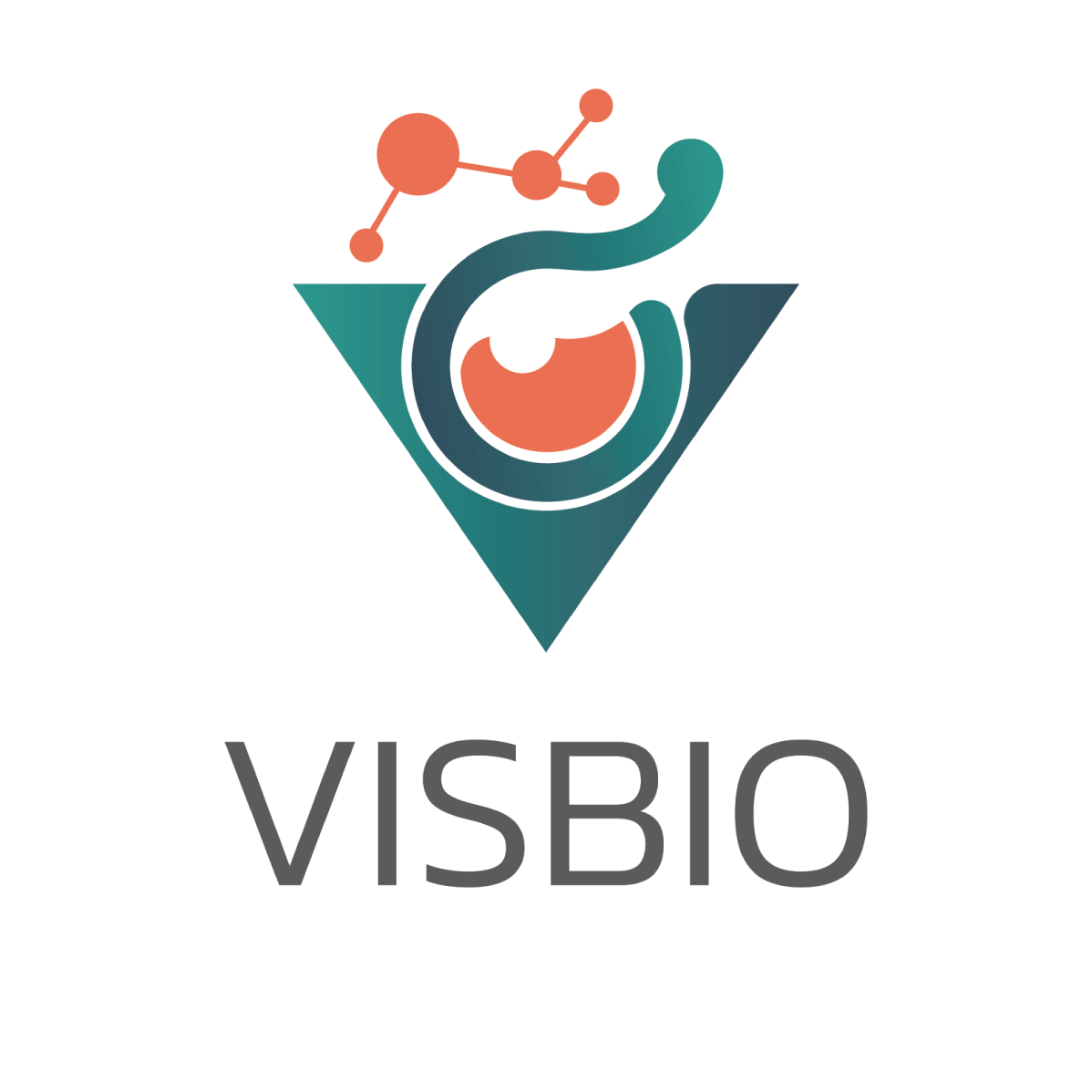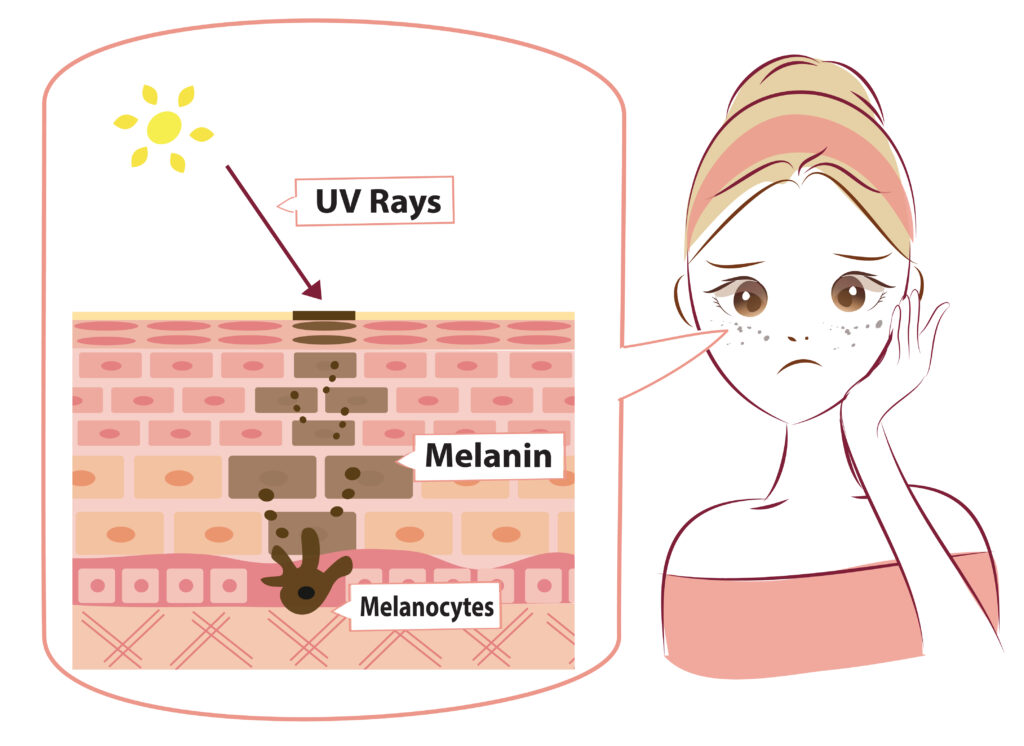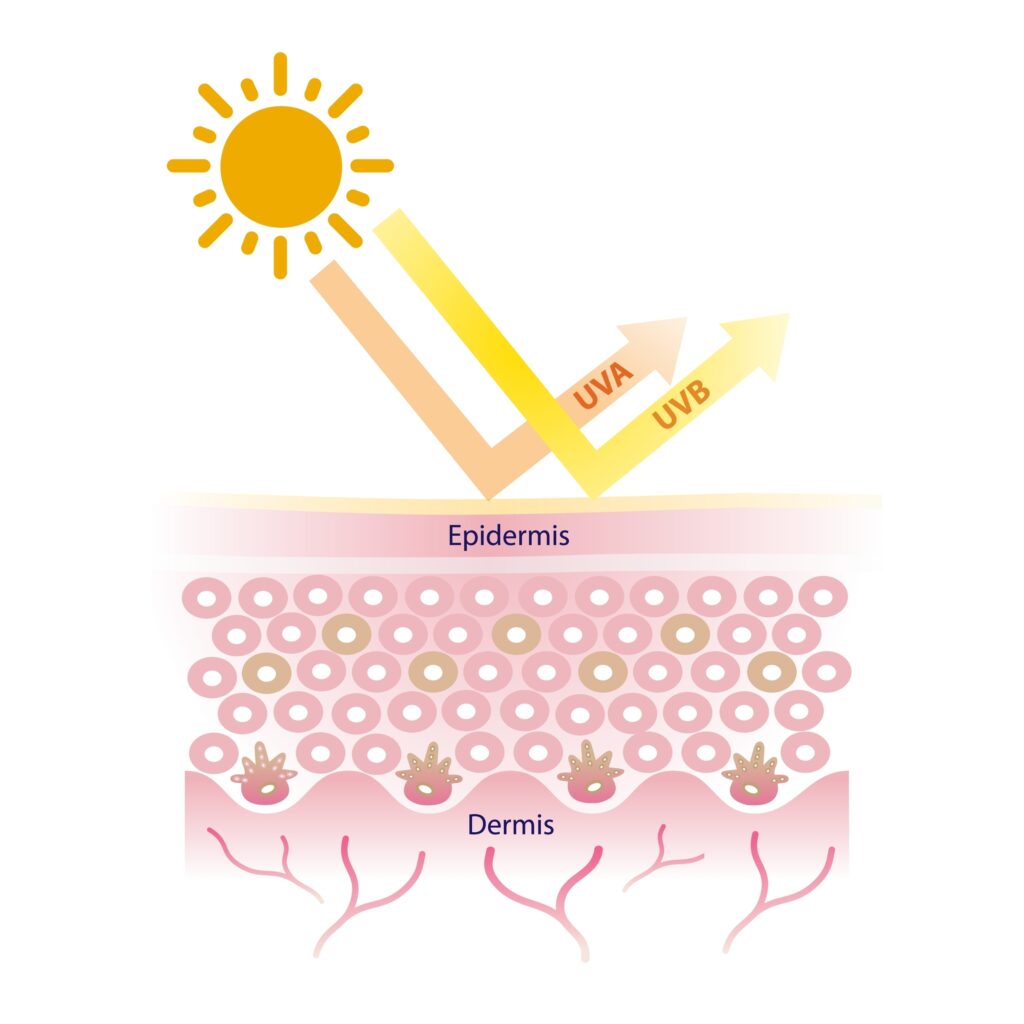
Information on Anti-Melanogenesis Efficacy Testing Service
VISBIO offers an analysis and testing service for the efficacy of Anti-melanogenesis conducted within a 2D cell culture. This service is available for all products in the health and beauty industry, with a focus on achieving fair and translucent skin.
Melanin is a pigment produced by melanocytes in the skin, and the melanogenesis process is triggered by exposure to sunlight or UV radiation and tyrosinase enzyme that accelerates this reaction. Eumelanin, which efficiently protects the skin from UV radiation, is more effective than pheomelanin. These melanin pigments are transported and stored in melanosomes, then transferred to keratinocytes located in the epidermal layer. When tyrosinase enzyme is overly stimulated, it leads to the abnormal overproduction of melanin pigments. Excessive melanin production can cause skin issues such as dark spots, freckles, and melasma. Therefore, inhibiting the melanin production process (Anti-melanogenesis) can help address these skin problems.
Getting to Know Melanin
Melanin is a pigment produced by melanocytes in the skin. The process of melanin production, known as melanogenesis, is stimulated by sunlight or UV radiation. The enzyme tyrosinase plays a pivotal role in this process by converting L-tyrosine into 3,4-dihydroxyphenylalanine (L-DOPA) and Dopaquinone. Subsequently, these compounds are synthesized into two types of melanin: eumelanin and pheomelanin. Eumelanin is brown or dark-colored melanin and is more effective at protecting the skin from UV radiation compared to pheomelanin, which is yellow in color.
Eumelanin, which efficiently protects the skin from UV radiation, is more effective than pheomelanin. These melanin pigments are transported and stored in melanosomes and are then sent to keratinocytes located beneath the skin’s surface. If tyrosinase enzyme is overly stimulated and functions excessively, it can lead to the abnormal overproduction of melanin pigments, resulting in skin problems like dark spots, freckles, or potentially even skin cancer, particularly melanoma.
Inhibiting the Melanin (Anti-melanogenesis) Production Process in the Skin
It is well known that excessive melanin production in the skin can lead to various skin issues such as dark spots, freckles and melasma. Therefore, anti-melanogenesis, the process of inhibiting melanin production, can help address these skin problems. Anti-melanogenesis involves several mechanisms, including inhibiting the synthesis of the tyrosinase enzyme, regulating the activity of tyrosinase enzymes, promoting exfoliate skin cells, and scavenging free radicals.
Raw materials with Melanin Production Inhibiting Properties
Raw materials with proven efficacy in inhibiting melanin production in the skin that are commonly used include kojic acid, arbutin or ascorbic acid. However, there is ongoing development of synthetic compounds and natural extracts from various plants or herbs, such as mulberry, licorice or emblica, etc., to develop them into active ingredients in health and beauty products. These active ingredients can be found in various product forms, including creams, lotions, serums, and more. Those have the effect of inhibiting or reducing the process of melanin pigment production in the skin. This helps achieve lighter, clearer skin while reducing issues like dark spots, freckles and melasma. Moreover, there’s increasing development of herbal extracts for further use in the cosmetics industry in the future.
Testing method of Anti-melanogenesis by 2D cell culture
Testing the effectiveness of inhibiting melanin production is conducted with melanocytes by observing the reduction in melanin production within the cells. This testing is performed under 2D cell culture. Test results can be reported in two ways:
- Testing for the inhibitory effects on melanin production is aimed at determining whether the test sample possesses properties to inhibit melanin production or anti-melanogenesis.
- Test results are reported by calculating the concentration of the sample that causes a 50% inhibition of melanin production (IC50, the half maximal inhibitory concentration), comparing it with standard substances. This reporting method is suitable for raw material samples, herbal extracts or ingredients that are used in various health and beauty products and need to know the percentage of sample development.
Literature:
- ประไพพิศ อินเสน, การยับยั้งกระบวนการสร้างเม็ดสีเมลานินจากพืชกลุ่มเบอร์รีไทย, วารสารวิชาการมหาวิทยาลัยอีสเทิร์นเอเชีย ฉบับวิทยาศาสตร์และเทคโนโลยี, ปีที่ 12 ฉบับที่ 2 ประจำเดือน พฤษภาคม-สิงหาคม 2561.
- Gaebler M, Silvestri A, Haybaeck J, Reichardt P, Lowery CD, Stancato LF, et al. Three-dimensional patient-derived In vitro sarcoma models: promising tools for improving clinical tumor management. Front Oncol 2017; 7: 203.
- Souza, Paula & Elias, Silvia & Simeoni, Luiz & Paula, José & Gomes, Sueli & Guerra, Eliete & Fonseca, Yris & Silva, Elton & Silveira, Damaris & Magalhães, Pérola. (2012). Plants from Brazilian Cerrado with Potent Tyrosinase Inhibitory Activity. PloS one. 7. e48589. 10.1371/journal.pone.0048589.



